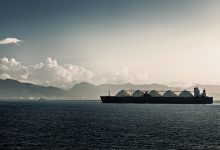A proposed expansion of a controversial brown coal-to-hydrogen project in Victoria is under increasing pressure, with a new report from the Institute for Energy Economics and Financial Analysis finding that it’s likely an economic dud.
The Hydrogen Energy Supply Chain (HESC) is a project jointly run by the Australian and Japanese governments to take brown coal from the Latrobe Valley and produce liquid hydrogen to then ship to Japan.
The pilot project was completed last year, with just 2.6 tonnes of liquefied hydrogen delivered to Japan. Now HESC is moving towards commercialisation with a Green Innovation Fund grant from Japan of ¥220 billion (approximately AU$2.35 billion) to upscale to 30,000 to 40,000 tonnes of hydrogen a year.
Using coal to produce hydrogen is the most emissions-intensive way to do it, creating 18 to 20 times more CO2 than the amount of hydrogen produced.
If this isn’t sounding very ‘green’ to you, you’d be right. The project is classed as “clean” blue hydrogen only due to carbon capture and storage, which so far hasn’t worked in any meaningful way around the world. It is also not yet operational at the HESC site.
The report by the Institute for Energy Economics and Financial Analysis notes that currently coal-based hydrogen is cheaper than renewable hydrogen. However, this won’t be the case for long.
“As renewable energy scales up, its costs are expected to fall, as are the costs of electrolysers used to produce the renewable hydrogen; so much so that by 2030, just when the HESC reaches full-scale production, it will be based on a more expensive technology,” Coal Sector Energy Finance Analyst Andrew Gorringe wrote in the report.
“HESC will struggle to prove commercially viable in the medium term as it competes with other suppliers of hydrogen beyond the initial short-term off-take agreement with Japan.”
The other problem the report highlights is just how far the hydrogen has to go to get from Victoria to Japan. Hydrogen – being the smallest element – is prone to large losses even in liquid form. The liquification process, where the hydrogen is cooled to -253 degrees, takes up over 30% of the energy of the hydrogen itself.
Plus the long shipping journey from Victoria to Japan also causes a large loss of hydrogen in the form of ‘boil off’.
“The hydrogen lost for boil-off and fuel use for propulsion for the 9,000km journey could be up to 40% of the cargo, and boil-off could be as high as 9 times that of the equivalent loss experienced in LNG shipping,” says the report.
Last week the Victorian Greens introduced a bill to end all coal mining and burning in Victoria by 2030, which would stop projects like this, and give more security to workers in the Latrobe Valley, with a job-for-job guarantee for coal workers.









